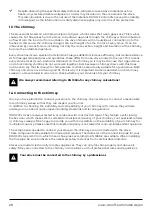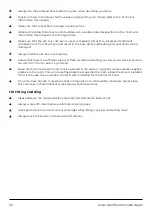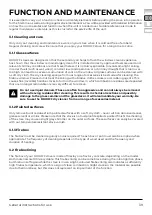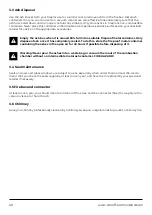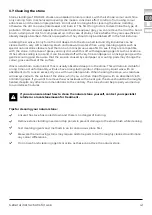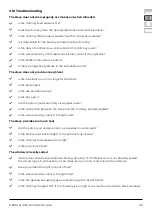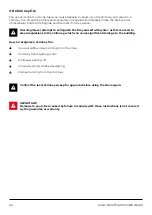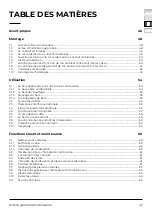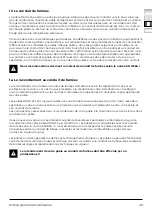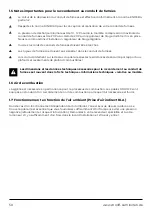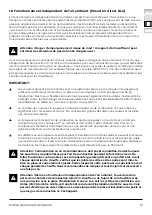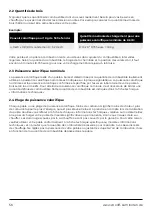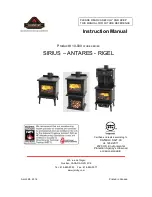
General instructions for use
41
3.7 Cleaning the stone
Stone claddings of DROOFF stoves are unsealed natural products, with their shape, colour and shine
only coming from mechanical processing. We make a conscious effort to refrain from using colour
enhancers and chemical impregnations. Do not wait too long before cleaning the stone cladding,
otherwise the dirt can penetrate deeper and burn in. The first thing to do is to determine the type of
pollution. If there are dust deposits that make the stone appear grey, you can remove them with a hand
brush, a damp dust cloth or compressed air. In the case of stains, check whether they are superficial or
already deeply absorbed. If stains are superficial, they should only be dabbed off in the first instance;
rubbing the stains will only force the dirt deeper into the stone. Settled and dry impurities can be
cleaned with a very soft scrubbing brush and lukewarm water. When using cleaning agents such as
special natural stone cleaners, test them on an inconspicuous area first to see if they are compatible
with the stone. In the case of greasy and oily dirt, wash this off with degreasing agents such as acetone.
If the surface soiling is too solid, it can be sanded off with very fine sandpaper or a rinsing sponge with a
gentle scouring pad. Be aware that the erosion caused by sandpaper or scouring pads may change the
colour, gloss and feel of the surface.
Wax is a stubborn contaminant that is usually absorbed deep into the stone. This will remain visible for
a long time and, unfortunately, will also have a long-lasting odour. Wipe up any liquid wax with an
absorbent cloth. Loosen excess, dry wax with a wooden spatula. When heating the stove, wax residues
will always come to the surface of the stone, which you can then dab off again with an absorbent cloth
or blotting paper. If you want to remove the wax residues with a heat gun, the stove should be thoroughly
heated, despite any other recommendations to the contrary. The stone should be properly warmed up
to avoid stress fractures.
If you are unsure about how to clean the natural stone yourself, contact your specialist
retailer or a local stonemason for treatment.
Tips for cleaning your natural stone:
Ensure the stove has cooled down and there is no danger of burning.
Remove stone cladding, inserts and top panels to prevent damage to the stove finish while cleaning.
Test cleaning agents and methods in an inconspicuous place first.
Be aware that removing stains may require all stone parts to be thoroughly cleaned to eliminate
any colour differences.
Do not use harsh cleaning agents or acids, as these can attack the natural stone.
Summary of Contents for Andalo 3 L
Page 2: ...2 ...
Page 3: ...Deutsch 4 English 25 Français 46 Nederlands 67 3 ...


